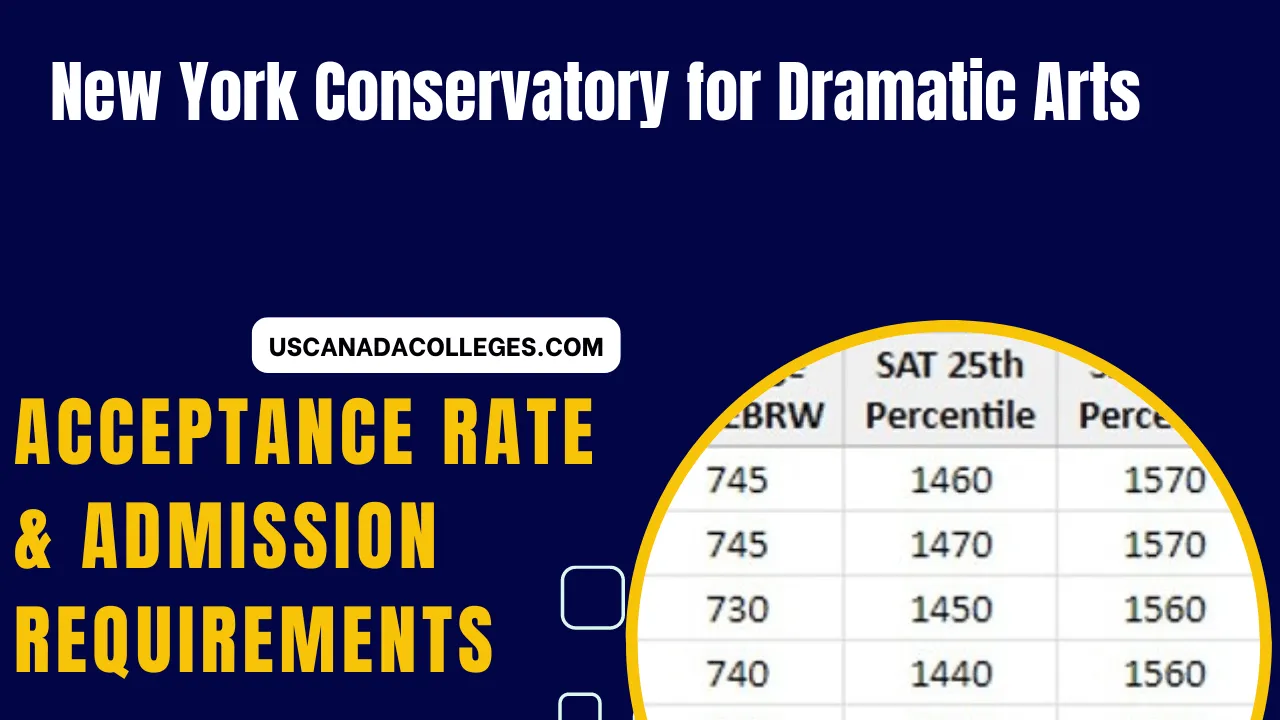New York Conservatory for Dramatic Arts is not selective in its admission process. The acceptance rate of New York Conservatory for Dramatic Arts (School for Film and Television) is 87.45%. This means that 87 out of every 100 applicants get admitted.
How Competitiveness is New York Conservatory for Dramatic Arts Admissions?
- Slightly Competitive: Applicants need average academics and extracurriculars.
- GPA, SAT/ACT, and AP/IB courses significantly impact admission chances.
- A holistic review considers essays, recommendations, and leadership roles.

Although the acceptance rate is high, remember that to secure admission to any institution of higher learning, you must convince the admission staff that you are mentally and physically fit for the course of studies. Your GPA, class performance, SAT/ACT scores, and IB or AP courses can help your application stand out. If you do not perform well in one area, you can showcase your strengths in other areas, as School for Film and Television is not very strict in its admission, so improving other areas will help you secure admission.
To enhance your chances of admission, perform well in academics and other activities. If your GPA is not excellent, compensate by scoring high on the SAT, and ACT, and taking IB or AP courses.
Additionally, a well-written letter of recommendation, your participation in co-curricular and extracurricular activities, and your interpersonal communication skills can improve your chances of admission.
New York Conservatory for Dramatic Arts Admission Requirements
Can I Get Into School for Film and Television Without SAT Or ACT?: New York Conservatory for Dramatic Arts considers admission test scores (SAT/ACT) during the application process but does not require them. Although it is not strictly a requirement, the test scores are considered for admission decisions. Hence, it is advisable to prepare well for the test and submit the best scores. Normally, students may appear in the test 4 to 5 times to improve their scores. Hence you are required to plan early and appear in upcoming SAT / ACT tests. Check the schedule of the test and plan accordingly. It is advisable to appear multiple times in the test unless you score well above the average SAT / ACT score of the admitted students, as given below.
New York Conservatory for Dramatic Arts (School for Film and Television) SAT Requirements
Each school has different requirements for SAT and ACT testing. Only a few schools require the SAT or ACT, but many consider your scores if you choose to submit them. The test score policy is already mentioned.
School for Film and Television Profile
Name: New York Conservatory for Dramatic Arts (School for Film and Television)
City: New York
URL: www.nycda.edu/
State: New York
Type: Private for Profit
Zip: 10011-4225
Campus: Main
Accredited by: National Association of Schools of Theatre (NAST)
How much does a degree from School for Film and Television Cost?
The average annual cost of the degree at New York Conservatory for Dramatic Arts is USD: 51158. As most of the students receive Pell Grants and Federal Grants the average annual net price a student has to pay at New York Conservatory for Dramatic Arts is much less than this.
How can I get a scholarship?
46.34% of the students are receiving Pell Grant and 78.05 percent are receiving Federal Grants. So it is a better choice to go to School for Film and Television and apply for PELL or federal loan grants.
At New York Conservatory for Dramatic Arts, you will have no problem receiving any scholarship from the federal government. Fill in the FAFSA application form at the earliest and enlist School for Film and Television as your choice in the form.
How much a School for Film and Television Graduate make?
The average annual salary of the School for Film and Television graduate after 4-6 years of graduation is USD 26921. An average School for Film and Television graduate makes this much after 10 years of enrollment (4-6 years after graduation).
The average annual income of a graduate in the United States is USD: 40595
Degree Programs
Associate Degree Programs
- Drama/Theatre Arts and Stagecraft
UG Certificate or Diploma Programs
Full list of All degree programs offered by New York Conservatory for Dramatic Arts.
Data on this page is sourced from IPEDS, College Scorecard's latest data as provided in 2024, US Department of Education's latest 2024 statistics, Institute's official websites and printed material as well as additional publicly available sources.
